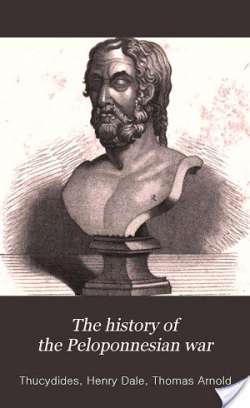« Return to all search results
Title Search Results
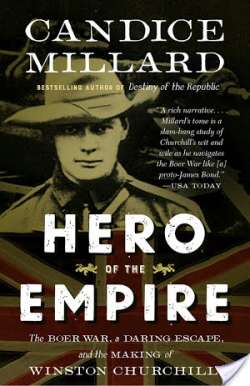
A thrilling narrative of Winston Churchill's extraordinary and little-known exploits during the Boer War. Churchill arrived in South Africa in 1899, valet and crates of vintage wine in tow, there to cover the brutal colonial war the British were fighting with Boer rebels. But just two weeks after his arrival Churchill was taken prisoner ... The story of his escape is incredible enough, but then Churchill enlisted, returned to South Africa, fought in several battles, and ultimately liberated the men with whom he had been imprisoned. Hero of Empire is more than an adventure story, for the lessons Churchill took from the Boer War would profoundly affect twentieth-century history.
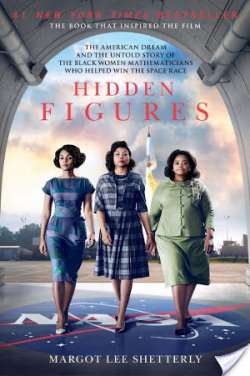
The #1 New York Times bestseller The phenomenal true story of the black female mathematicians at NASA whose calculations helped fuel some of America’s greatest achievements in space. Soon to be a major motion picture starring Taraji P. Henson, Octavia Spencer, Janelle Monae, Kirsten Dunst, and Kevin Costner. Before John Glenn orbited the earth, or Neil Armstrong walked on the moon, a group of dedicated female mathematicians known as “human computers” used pencils, slide rules and adding machines to calculate the numbers that would launch rockets, and astronauts, into space. Among these problem-solvers were a group of exceptionally talented African American women, some of the brightest minds of their generation. Originally relegated to teaching math in the South’s segregated public schools, they were called into service during the labor shortages of World War II, when America’s aeronautics industry was in dire need of anyone who had the right stuff. Suddenly, these overlooked math whizzes had a shot at jobs worthy of their skills, and they answered Uncle Sam’s call, moving to Hampton, Virginia and the fascinating, high-energy world of the Langley Memorial Aeronautical Laboratory. Even as Virginia’s Jim Crow laws required them to be segregated from their white counterparts, the women of Langley’s all-black “West Computing” group helped America achieve one of the things it desired most: a decisive victory over the Soviet Union in the Cold War, and complete domination of the heavens. Starting in World War II and moving through to the Cold War, the Civil Rights Movement and the Space Race, Hidden Figures follows the interwoven accounts of Dorothy Vaughan, Mary Jackson, Katherine Johnson and Christine Darden, four African American women who participated in some of NASA’s greatest successes. It chronicles their careers over nearly three decades they faced challenges, forged alliances and used their intellect to change their own lives, and their country’s future.

In Hiding Out at the Pancake Palace by Nan Marino, eleven-year-old musical prodigy, Elvis Ruby, was supposed to win the most coveted reality show on television, Tween Star. None of the other contestants even came close to his talents. But in the middle of the biggest night, with millions of people watching, Elvis panicked. He forgot the words to the song. He forgot the tune. He forgot how to play every single instrument he'd ever known and froze on national TV. So Elvis must run from the paparazzi camped outside his door and spend the summer working with his aunt and cousin at Piney Pete's Pancake Palace in the remote wilds of New Jersey. It's the perfect place to be anonymous, that is until Elvis meets Cecilia, a girl who can't seem to help blurting out whatever's on her mind. An NPR Best Book of 2013

A fascinating chronicle of how celebrity has inundated the world of fashion, realigning the forces that drive both the styles we covet and the bottom lines of the biggest names in luxury apparel. From Coco Chanel’s iconic tweed suits to the miniskirt’s surprising comeback in the late 1980s, fashion houses reigned for decades as the arbiters of style and dictators of trends. Hollywood stars have always furthered fashion’s cause of seducing the masses into buying designers’ clothes, acting as living billboards. Now, forced by the explosion of social media and the accelerating worship of fame, red carpet celebrities are no longer content to just advertise and are putting their names on labels that reflect the image they—or their stylists—created. Jessica Simpson, Jennifer Lopez, Sarah Jessica Parker, Sean Combs, and a host of pop, sports, and reality-show stars of the moment are leveraging the power of their celebrity to become the face of their own fashion brands, embracing lucrative contracts that keep their images on our screens and their hands on the wheel of a multi-billion dollar industry. And a few celebrities—like the Olsen Twins and Victoria Beckham—have gone all the way and reinvented themselves as bonafide designers. Not all celebrities succeed, but in an ever more crowded and clamorous marketplace, it’s increasingly unlikely that any fashion brand will succeed without celebrity involvement—even if designers, like Michael Kors, have to become celebrities themselves. Agins charts this strange new terrain with wit and insight and an insider’s access to the fascinating struggles of the bold-type names and their jealousies, insecurities, and triumphs. Everyone from industry insiders to fans of Project Runway and America's Next Top Model will want to read Agins’s take on the glitter and stardust transforming the fashion industry, and where it is likely to take us next.
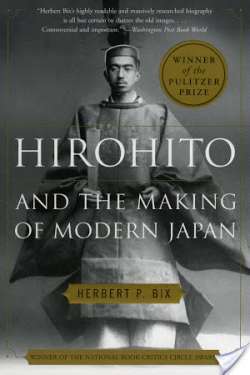
Winner of the Pulitzer Prize In this groundbreaking biography of the Japanese emperor Hirohito, Herbert P. Bix offers the first complete, unvarnished look at the enigmatic leader whose sixty-three-year reign ushered Japan into the modern world. Never before has the full life of this controversial figure been revealed with such clarity and vividness. Bix shows what it was like to be trained from birth for a lone position at the apex of the nation's political hierarchy and as a revered symbol of divine status. Influenced by an unusual combination of the Japanese imperial tradition and a modern scientific worldview, the young emperor gradually evolves into his preeminent role, aligning himself with the growing ultranationalist movement, perpetuating a cult of religious emperor worship, resisting attempts to curb his power, and all the while burnishing his image as a reluctant, passive monarch. Here we see Hirohito as he truly was: a man of strong will and real authority. Supported by a vast array of previously untapped primary documents, Hirohito and the Making of Modern Japan is perhaps most illuminating in lifting the veil on the mythology surrounding the emperor's impact on the world stage. Focusing closely on Hirohito's interactions with his advisers and successive Japanese governments, Bix sheds new light on the causes of the China War in 1937 and the start of the Asia-Pacific War in 1941. And while conventional wisdom has had it that the nation's increasing foreign aggression was driven and maintained not by the emperor but by an elite group of Japanese militarists, the reality, as witnessed here, is quite different. Bix documents in detail the strong, decisive role Hirohito played in wartime operations, from the takeover of Manchuria in 1931 through the attack on Pearl Harbor and ultimately the fateful decision in 1945 to accede to an unconditional surrender. In fact, the emperor stubbornly prolonged the war effort and then used the horrifying bombings of Hiroshima and Nagasaki, together with the Soviet entrance into the war, as his exit strategy from a no-win situation. From the moment of capitulation, we see how American and Japanese leaders moved to justify the retention of Hirohito as emperor by whitewashing his wartime role and reshaping the historical consciousness of the Japanese people. The key to this strategy was Hirohito's alliance with General MacArthur, who helped him maintain his stature and shed his militaristic image, while MacArthur used the emperor as a figurehead to assist him in converting Japan into a peaceful nation. Their partnership ensured that the emperor's image would loom large over the postwar years and later decades, as Japan began to make its way in the modern age and struggled -- as it still does -- to come to terms with its past. Until the very end of a career that embodied the conflicting aims of Japan's development as a nation, Hirohito remained preoccupied with politics and with his place in history. Hirohito and the Making of Modern Japan provides the definitive account of his rich life and legacy. Meticulously researched and utterly engaging, this book is proof that the history of twentieth-century Japan cannot be understood apart from the life of its most remarkable and enduring leader.
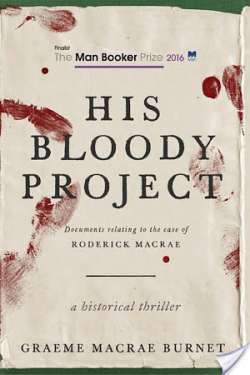
Man Booker Prize Finalist, LA Times Book Prize Finalist, New York Times Editor’s Choice, and an American Booksellers Association National Indie Bestseller! Named a Best Book of 2016 by Newsweek, NPR, The Guardian, The Telegraph, and The Sunday Times! In the smash hit historical thriller that the New York Times Book Review calls “thought provoking fiction,” a brutal triple murder in a remote Scottish farming community in 1869 leads to the arrest of seventeen-year-old Roderick Macrae. There is no question that Macrae committed this terrible act. What would lead such a shy and intelligent boy down this bloody path? And will he hang for his crime? Presented as a collection of documents discovered by the author, His Bloody Project opens with a series of police statements taken from the villagers of Culdie, Ross-shire. They offer conflicting impressions of the accused; one interviewee recalls Macrae as a gentle and quiet child, while another details him as evil and wicked. Chief among the papers is Roderick Macrae’s own memoirs where he outlines the series of events leading up to the murder in eloquent and affectless prose. There follow medical reports, psychological evaluations, a courtroom transcript from the trial, and other documents that throw both Macrae’s motive and his sanity into question. Graeme Macrae Burnet’s multilayered narrative—centered around an unreliable narrator—will keep the reader guessing to the very end. His Bloody Project is a deeply imagined crime novel that is both thrilling and luridly entertaining from an exceptional new voice.
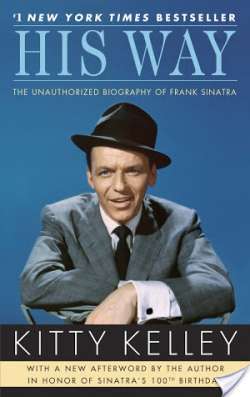
This is the book Frank Sinatra failed to stop, the unauthorized biography of one of the most elusive public figures of our time. Celebrated journalist Kitty Kelley spent three years researching government documents (Mafia-related material, wiretaps and secret testimony) and interviewing more than 800 people in Sinatra's life (family, colleagues, law-enforcement officers, personal friends). Fully documented, highly detailed and filled with revealing anecdotes, here is the penetrating story of the explosively controversial and undeniably multi-talented legend who ruled the entertainment industry for more than fifty years. From the Paperback edition.
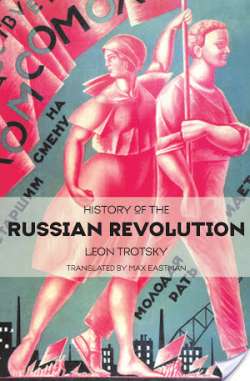
The definitive account of the Russian Revolution by Leon Trotsky, its leader and key historian. Published to coincide with the 90th anniversary of the 1917 Russian Revolution, this edition of Trotsky's masterpiece, with a new foreword by Ahmed Shawki, tells the epic story of the remarkable events which transformed Russian and world history forever. Leon Trotsky was a leader of the 1917 Russian Revolution and author of My Life and The Revolution Betrayed. Ahmed Shawki is editor of International Socialist Review and author of Black Liberation and Socialism.

A history of German women in the Holocaust reveals their roles as plunderers, witnesses, and actual executioners on the Eastern front, describing how nurses, teachers, secretaries, and wives responded to what they believed to be Nazi opportunities only to perform brutal duties.
